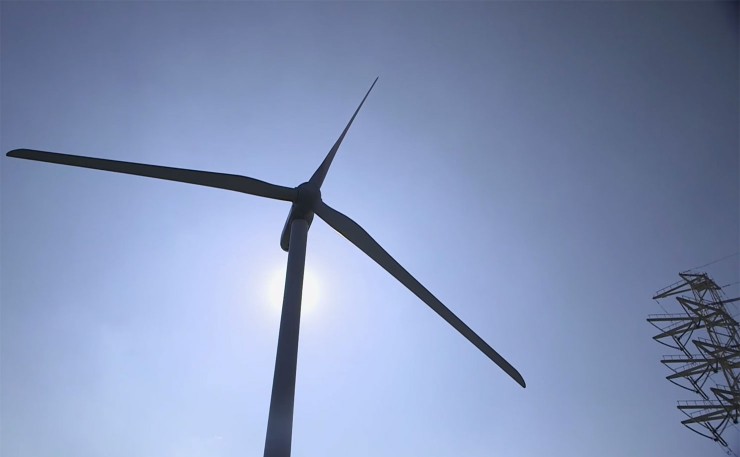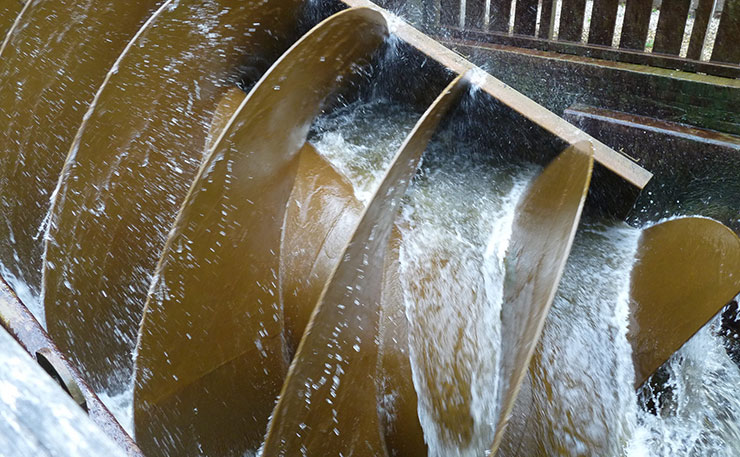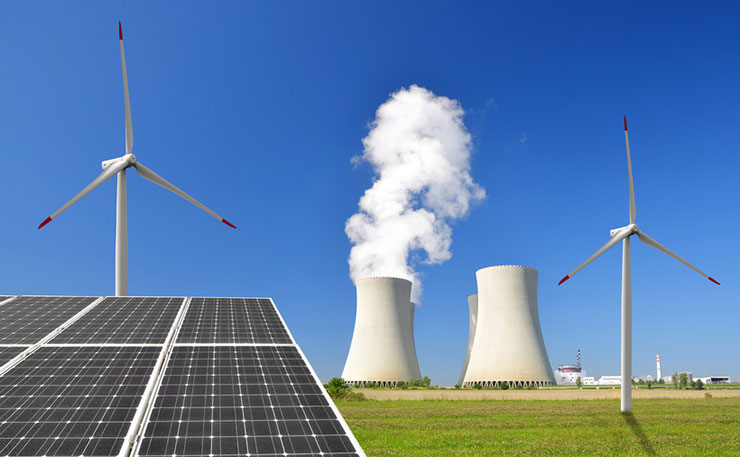In our ongoing series on nuclear energy, Terry Leach takes up the cause for renewables.
Geoff Russell has copped a bit of flak lately for his pro-nuclear writings, as has Chris Graham for publishing him. While Chris has published two anti-nuke rebuttals of Geoff’s views, I’d like to take another tack.
I’m a renewable energy advocate, not an anti-nuclear zealot. I think Geoff’s got some valid points regarding the demonization of nuclear power, while we all seem relatively comfortable with energy and transport systems that are killing and maiming thousands of Australians each year. Globally, we’re talking millions of victims, annually.
It’s Geoff’s continual misinformation about renewable energy that pisses me off.
But first, to those people who have chosen no withdraw their support for New Matilda because of the publication of Geoff’s views. That is like calling for the abolition of the ABC because you don’t like Counterpoint on Radio National.
Geoff is an intelligent and decent man who cares deeply about humanity, animals and the environment. In regard to renewable energy, I’m sure he’s wrong. To understand how decent people may hold views diametrically opposed to your own, Dr Lissa Johnson has written sublime articles on system justification and cognitive dissonance. So when reading contributions from me and from Geoff, consider how psychology is influencing our views and your reaction to them.
Those two articles motivated me to go from being a reader to a subscriber. If the (additional) price to pay to have access to Dr Johnson’s writings (and the many other worthy contributors) is to have to put up with Geoff’s nonsense, I’m in. I strongly encourage you to subscribe.
Now, time to sink the slipper. Geoff and the other pro-nuke advocates are wasting their time promoting a technology that will never be adopted in Australia. In 10 years renewable energy in South Australia has gone from almost zero to over 40 per cent and still climbing rapidly. The ACT will have achieved 100 per cent renewable energy by 2020.

This is despite federal policy being contested and uncertain. In the time it would take to build a nuclear reactor, renewable energy will be supplying the vast bulk of Australia’s electricity generation, and well on the way to powering our transport system.
While I’m confident renewable technology will eventually provide 100 per cent global carbon neutral energy, we have a very short time to mitigate the damage we’re doing to the global climate. Change can be uncomfortable and scary, which is why vested interests can so easily sway public opinion. Having pro-nuke advocates saying that we must adopt nuclear power because renewables don’t cut the mustard is just encouraging people to stick with the status quo.
The fossil fuel lobby are laughing at us just as the monarchists laughed at the republicans arguing over the model of appointing a president.
I don’t mind Geoff arguing for nuclear power, I just wish he’d stop cherry-picking the facts to suit his argument (the anti-nuke lobby are just as bad). Take for example this effort in response to the SA wide power blackout in September 2016.
Geoff writes: “In 2012, Electranet estimated that the grid could handle a 450 megawatt (MW) loss without crashing…. So how much power did SA lose when those big towers collapsed? A mere 315 MW.”
Geoff doesn’t link to the source, but I’m fairly sure that Electranet was talking just about the sudden loss of generation, not combined with utter devastation of a significant part of the transmission network.
Geoff’s thesis is that our electricity network needs the inertia of heavy turbines to be stable. As wind turbines aren’t directly connected to the grid like fossil fuel turbines, they don’t count. So we need nuclear driven turbines to provide carbon free system inertia.
This is putting the cart before the horse. Our network developed with inherent inertia. This inertia can keep the network going when supply is unexpectedly withdrawn, for a little while. A very little while, just one second! But our network engineers have taken advantage of this feature to design a load shedding system that within that one second blacks out some customers to keep the remainder of the grid going.
This system in SA worked fine the previous four times in 17 years that the Heywood Interconnector tripped. On three of those occasions the coal powered Northern Power Station tripped first (so much for the reliability of steam driven turbines!). On only one occasion in 17 years was the Heywood Interconnector itself to blame, blacking out 20 per cent of the state for nine minutes. But that blackout continued for a further 26 minutes, due to a malfunctioning fossil fuel generator preventing re-connection.
The only time that significant wind generation was withdrawn unexpectedly, South Australia was suffering the most extreme weather in the history of the grid. Twenty-two transmission towers collapsed exacerbating the problem of literally tens of thousands of lightning strikes.
On this occasion the very high Rate Of Change Of Frequency (ROCOF) also caused the remaining fossil fuel generators to trip producing a state-wide black out. And that went on much longer than necessary due to the failure of both of the fossil fuel generators that were paid to provide emergency re-start services.
So how do we make sure this never happens again? Well we could just put up with this every half century or so. Or we could build our network towers to stay upright in extreme weather. Or we could spend a fortune subsidising polluting fossil fuel generators or nuclear reactors to keep the entire grid working for just one second. Or we could instead install equipment that can respond much quicker than any turbine can to maintain voltage and frequency; that can even out supply and demand; and reduce the exorbitant cost of our network.
They are called batteries, and this is exactly what AEMO and Electranet were already considering installing. This was the cheapest option to address known issues in the north of SA regarding maintaining voltages and frequency. Batteries are the only technology that can go from soaking up excess network generation to providing significant power in milliseconds. Inertia works against you when you’re trying to get those turbines moving faster.
We have an awful lot of fossil fuel generation sitting idle ready for those rare demand peaks. Some new gas generators only operate for as little as 3 per cent of the time. It makes a lot of sense to substitute batteries that not only provide this peaking power when required, but can provide immediate emergency power, frequency control, voltage control and avoidance of network upgrades. This is already happening in the United States, not as some sort of push for renewable energy, but as a rational decision to provide a reliable network at the cheapest possible price.
Geoff is a repeat offender when it comes to misrepresenting the facts about our network. Take this effort regarding the supposed inability of the interconnectors to make a significant contribution when solar and wind are not producing, such as on a clear and frosty winter morning.
Geoff writes: “So we have a peak demand of just over three billion watts and for parts of winter our wind farms can supply just 75 million watts.” Geoff fails to mention that peak demand is in summer, so winter wind farm generation is a touch irrelevant.
And he doubles up with this: “Currently the SA interconnections can supply less than 1/4 of our peak demand. So when our wind farms are supplying just 75 mega watts and our interconnecters are supplying 680 mega watts, then where should the other couple of billion watts come from?”
Er, Geoff, the peak demand occurs late afternoon in summer during a heat wave, where wind and solar are making a significant contribution. Peak demand is decreasing and occurring later in the afternoon due to self-consumption of rooftop PV. Oh, and the interconnectors’ capacity is currently 870 MW, not the quoted 650MW. As well, there are proposals to increase total interconnection capacity to somewhere between 1300MW to 2220 MW.
Geoff then goes on to argue that geographic distribution of wind turbines doesn’t reduce the variability of wind power, as there are many days when the entire NEM has low contribution from wind. Wrong again Geoff, geographic distribution WILL reduce the problem.
With the vast bulk of national wind generation capacity currently installed in South Australia and nearby Victoria, then of course there will be a high degree of correlation of all wind power with SA’s wind power. We don’t have idiots in charge of the energy transition; new turbines are being planned in areas that have low correlation with the existing wind turbines, and even installing turbines that are more effective at harnessing low wind speeds. Wind farm owners want the greatest financial return so naturally they are now looking further afield.

Geoff then criticises the potential of pumped hydro, arguing that we would need massive dams causing great environmental destruction and greenhouse gas emissions. He can’t seem to get away from his fixation with large centralised generation.
There are many sites already identified that can take advantage of the frequent occasions that will arise when renewable energy exceeds demand. It makes sense to locate these as close to the generation and the demand to avoid losses in transmission. ARENA is currently funding a project to map suitable locations so that the best sites can be developed as cheaply as possible.
I could go on and on picking the many errors and misleading bias in Geoff’s writings, but it is tedious to do and tedious to read.
South Australia has shown that we can get to 45 per cent without any storage. With the NEM able to transport generation across most of the economy, and with the significant existing hydro storage in the eastern states, we can get to about 80 per cent without additional storage and without significant curtailment of excess renewable generation.
Neither of the major parties is expecting this to happen until well after 2030. I suspect that storage will become more urgent as the uptake of renewables and cost reductions have consistently beaten predictions.
It should be noted that new wind and solar capacity is now cheaper to build than new fossil fuel generation and much cheaper than nuclear. The renewable generation revolution is now unstoppable, we just need it to happen very quickly.
But the major issue for fossil fuel generators, and the nuclear wannabes, is the cost of the national grid that they are totally dependent upon, which (in SA at least) makes up more than half the retail cost of electricity. Grid utilisation is decreasing as more and more rooftop solar is installed. And even more change is on the way.
Less than 12 months ago Tesla shook up the storage industry with the Powerwall 1.0, forcing competitors to match their price. The Powerwall 2.0 has just halved the price per KWH, and it is now on the threshold of making economic sense for households to store their rooftop PV generation.
When they halve the price again, the entire economic model of centralised grid and generation collapses.
So Geoff, keep writing your futile pro-nuke nonsense if you wish, the fossil fuel lobby are cheering you on. But get your facts straight before you start criticising renewables.
Donate To New Matilda
New Matilda is a small, independent media outlet. We survive through reader contributions, and never losing a lawsuit. If you got something from this article, giving something back helps us to continue speaking truth to power. Every little bit counts.





